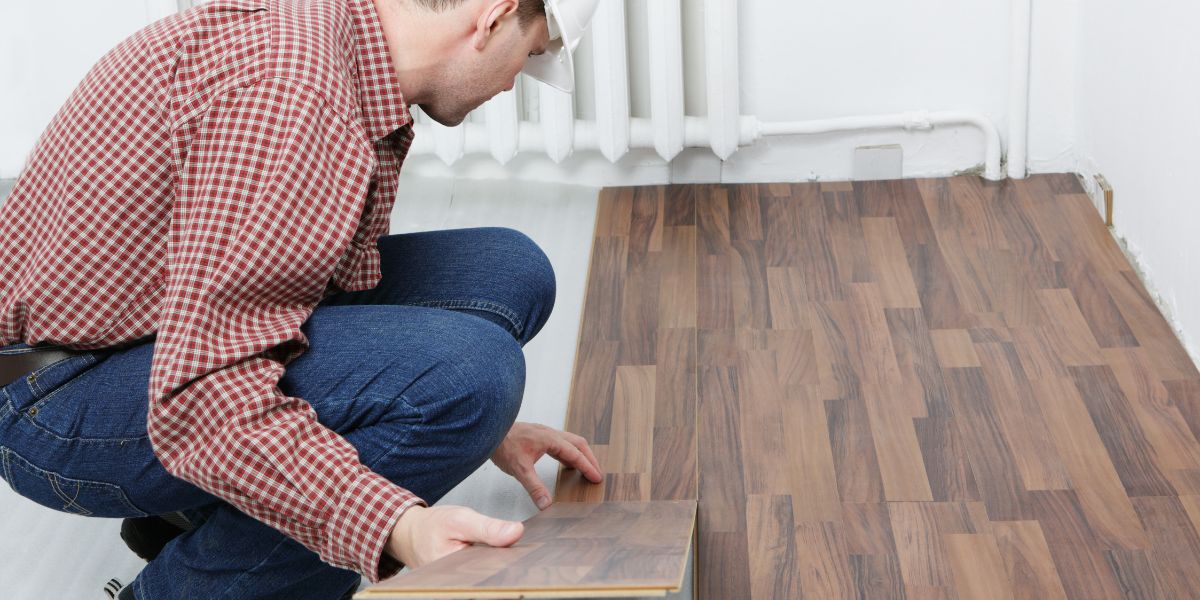Can radiant floor heating be installed under laminate flooring? Discover the benefits, installation tips, and important considerations for using radiant heat with laminate to create a warm, energy-efficient floor.
Radiant Floor Heating Be Installed Under Laminate Flooring
Radiant floor heating is an increasingly popular method for keeping homes warm and comfortable. Unlike traditional heating systems that rely on forced air or baseboard heaters, radiant heating systems warm up floors directly, creating a cozy environment and eliminating cold spots.
A common question homeowners have when considering this heating method is whether radiant floor heating can be installed under laminate flooring. In this comprehensive guide, we’ll explore the compatibility of radiant floor heating with laminate flooring, the types of systems available, installation considerations, benefits, and more.
Understanding Radiant Floor Heating
What is Radiant Floor Heating?
Radiant floor heating works by distributing heat through the floor surface, which then radiates warmth into the room. There are two primary types of radiant heating systems:
- Hydronic Systems: These systems use water heated by a boiler or water heater and circulated through tubing beneath the floor. The warm water heats the floor, which then warms the air above it.
- Electric Systems: Electric radiant heating involves heating cables or mats installed directly under the flooring. When electricity passes through the cables, they generate heat, warming the floor.
Both systems can provide comfortable, consistent heating, but they operate differently and have various installation requirements.
Benefits of Radiant Floor Heating
Before diving into the specifics of installing radiant heating under laminate, let’s explore some benefits:
- Even Heat Distribution: Radiant heating eliminates cold spots, providing a uniform temperature throughout the room.
- Energy Efficiency: Because radiant heating warms objects rather than air, it can operate at lower temperatures, potentially lowering energy bills.
- Improved Indoor Air Quality: Radiant systems do not rely on air movement, reducing dust and allergens circulated in the home.
- Design Flexibility: Radiant heating can be installed in various floor types, including tile, stone, and laminate.
Can Radiant Floor Heating Be Installed Under Laminate Flooring?
Compatibility of Radiant Heating with Laminate
Yes, radiant floor heating can be installed under laminate flooring. However, certain factors must be considered to ensure optimal performance and safety. Laminate flooring is typically made of composite materials with a photographic layer that resembles wood. It is crucial to choose the right type of radiant heating system and ensure proper installation to avoid damaging the flooring or compromising the heating efficiency.
Key Considerations for Installation
When planning to install radiant floor heating under laminate flooring, consider the following factors:
- Type of Radiant Heating System:
- Electric Radiant Heating: Electric heating mats or cables are often preferred for laminate floors, as they provide more control over heating levels and are easier to install.
- Hydronic Radiant Heating: If using a hydronic system, ensure that the laminate flooring is compatible with the heating system and can withstand the heat.
- Flooring Manufacturer Guidelines:
Always check the manufacturer’s guidelines for your laminate flooring. Some manufacturers specify the maximum temperature the laminate can withstand. Exceeding these temperatures can lead to warping, buckling, or damage to the laminate. - Insulation:
Proper insulation beneath the heating system can enhance efficiency and prevent heat loss. Insulating the subfloor will help direct heat upward and improve overall system performance. - Thermal Resistance:
The thermal resistance (R-value) of the laminate flooring can affect how well heat transfers through it. Low R-value materials allow heat to pass more effectively. It’s essential to choose a laminate with low thermal resistance for optimal performance. - Installation Method:
Follow the correct installation method for radiant heating under laminate flooring. Electric systems typically involve laying heating mats directly onto the subfloor before installing the laminate, while hydronic systems require careful placement of tubing.
Installation Steps for Radiant Floor Heating Under Laminate Flooring
Step 1: Prepare the Subfloor
Before installation, ensure the subfloor is clean, dry, and level. Remove any debris, nails, or staples, and repair any damage. If you’re installing over concrete, ensure it’s fully cured and free of moisture.
Step 2: Install Insulation
Adding insulation beneath the radiant heating system will help direct heat upward and improve efficiency. Install rigid foam insulation boards or reflective insulation panels on the subfloor.
Step 3: Install the Radiant Heating System
Depending on whether you choose an electric or hydronic system, follow the respective installation guidelines:
- For Electric Systems:
- Lay the heating mats or cables according to the manufacturer’s instructions.
- Ensure that the heating elements are evenly spaced to provide consistent heat distribution.
- For Hydronic Systems:
- Lay the PEX tubing in the desired pattern, ensuring proper spacing and secure attachment to the subfloor.
- Connect the tubing to the manifold and boiler system.
Step 4: Test the System
Before installing the laminate flooring, test the radiant heating system to ensure it functions correctly. Check for leaks in hydronic systems and ensure electric systems heat properly. Allow the system to run for a few hours to verify that it reaches the desired temperature without issues.
Step 5: Install the Laminate Flooring
Once the heating system is confirmed to be working correctly, you can install the laminate flooring:
- Underlayment: Choose an appropriate underlayment compatible with both the radiant heating system and laminate flooring. The underlayment should provide cushioning, moisture protection, and soundproofing.
- Laminate Installation: Follow the manufacturer’s installation guidelines for the laminate flooring. Use the floating floor method, allowing the laminate to expand and contract as needed.
Step 6: Final Testing
After the laminate is installed, test the radiant heating system again to ensure it heats properly. Allow the system to operate and monitor the temperature to confirm that the laminate performs well under heating.
Benefits of Radiant Floor Heating Under Laminate
Installing radiant floor heating under laminate flooring offers several advantages:
- Comfort: Radiant heating provides a warm, comfortable surface to walk on, especially during cold months.
- Aesthetic Appeal: Laminate flooring mimics the look of hardwood and can enhance the overall design of your space while providing the benefits of radiant heating.
- Versatility: Radiant heating systems can be installed in various rooms, including living rooms, kitchens, and bathrooms, making it a versatile option for any home.
Challenges and Considerations
While radiant floor heating under laminate flooring has many benefits, there are challenges to consider:
- Cost: The initial investment for installing radiant floor heating can be higher than traditional heating systems. However, energy savings over time may offset these costs.
- Compatibility: Not all laminate flooring is suitable for radiant heating. Always consult with the flooring manufacturer to ensure compatibility.
- Temperature Control: Maintaining the appropriate temperature is crucial to prevent damage to laminate flooring. A thermostat with a floor sensor can help regulate temperature effectively.
- Installation Complexity: Installing radiant heating requires expertise to ensure proper functioning and prevent issues. Hiring a qualified professional for installation is highly recommended.
Maintenance of Radiant Floor Heating Systems
Once your radiant floor heating system is installed under laminate flooring, regular maintenance is essential to ensure longevity and efficiency:
- Annual Inspections: Schedule annual inspections with a qualified HVAC technician to check the system’s performance and ensure everything functions correctly.
- Monitor System Performance: Pay attention to any changes in heating efficiency or unusual noises, as these can indicate underlying issues.
- Check for Leaks: For hydronic systems, regularly inspect tubing for leaks or signs of moisture that could indicate problems.


